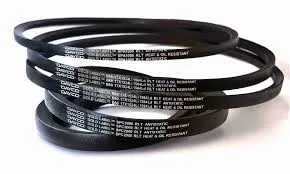- Arabic
- French
- Russian
- Spanish
- Portuguese
- Turkish
- Armenian
- English
- Albanian
- Amharic
- Azerbaijani
- Basque
- Belarusian
- Bengali
- Bosnian
- Bulgarian
- Catalan
- Cebuano
- Corsican
- Croatian
- Czech
- Danish
- Dutch
- Afrikaans
- Esperanto
- Estonian
- Finnish
- Frisian
- Galician
- Georgian
- German
- Greek
- Gujarati
- Haitian Creole
- hausa
- hawaiian
- Hebrew
- Hindi
- Miao
- Hungarian
- Icelandic
- igbo
- Indonesian
- irish
- Italian
- Japanese
- Javanese
- Kannada
- kazakh
- Khmer
- Rwandese
- Korean
- Kurdish
- Kyrgyz
- Lao
- Latin
- Latvian
- Lithuanian
- Luxembourgish
- Macedonian
- Malgashi
- Malay
- Malayalam
- Maltese
- Maori
- Marathi
- Mongolian
- Myanmar
- Nepali
- Norwegian
- Norwegian
- Occitan
- Pashto
- Persian
- Polish
- Punjabi
- Romanian
- Samoan
- Scottish Gaelic
- Serbian
- Sesotho
- Shona
- Sindhi
- Sinhala
- Slovak
- Slovenian
- Somali
- Sundanese
- Swahili
- Swedish
- Tagalog
- Tajik
- Tamil
- Tatar
- Telugu
- Thai
- Turkmen
- Ukrainian
- Urdu
- Uighur
- Uzbek
- Vietnamese
- Welsh
- Bantu
- Yiddish
- Yoruba
- Zulu
Նյմ . 14, 2024 13:50 Back to list
automobile rubber timing belt
The Importance of the Automobile Rubber Timing Belt
The automobile industry has seen countless innovations over the years, yet some components remain critical to the proper functioning of vehicles. One such component is the rubber timing belt. Although it may seem like a simple piece of machinery, the timing belt plays a crucial role in the performance and longevity of an engine. Understanding its function, maintenance, and potential problems can help vehicle owners make informed decisions about their automobiles.
What is a Timing Belt?
The timing belt is a reinforced rubber belt that connects the crankshaft to the camshaft in an internal combustion engine. Its primary function is to synchronize the rotation of these two shafts, ensuring that the engine's valves open and close at the correct times during the intake and exhaust strokes. This synchronization is essential for optimal engine performance, fuel efficiency, and emission control.
Most modern vehicles utilize timing belts instead of chains for this purpose due to their lighter weight, lower noise levels, and reduced maintenance requirements. However, the material properties of rubber mean that the timing belt is subject to wear and tear over time. Therefore, regular inspections and timely replacements are crucial for the health of the engine.
The Function of a Timing Belt
A well-functioning timing belt ensures that the engine operates smoothly and efficiently. When the engine starts, the crankshaft begins to rotate, which in turn drives the timing belt. As the timing belt moves, it causes the camshaft to rotate, allowing the engine valves to open and close. This precise coordination is critical; if the belt were to slip or break, the engine could suffer severe damage.
In interference engines, where the pistons and valves occupy the same space, a failure of the timing belt can lead to catastrophic damage. A snapped belt can allow the pistons to collide with the open valves, resulting in bent valves, damaged pistons, and costly repairs. In non-interference engines, while a broken belt won't cause as much immediate damage, it will still leave the vehicle inoperable.
Signs of Timing Belt Wear
automobile rubber timing belt

Vehicle owners should be proactive in monitoring the condition of their timing belts. Some common signs of wear include
1. Visible Cracks If the rubber is cracked or frayed, it indicates that the belt is nearing the end of its lifespan. 2. Noise Unusual noises, such as squeaking or ticking sounds from the engine, could signify that the timing belt has become loose or is misaligned. 3. Engine Performance Issues Difficulty in starting the engine, stalling, or a noticeable decrease in performance may point to potential timing belt issues.
4. Warning Lights Most modern vehicles have diagnostic systems that may trigger a warning light if the timing belt is malfunctioning or close to failure.
Maintenance and Replacement
The lifespan of a rubber timing belt is typically between 60,000 to 100,000 miles, but this can vary based on the vehicle make and model. To ensure longevity, it is advisable to adhere to the manufacturer's recommendations for replacement. Regular maintenance, including checking the tension and alignment of the belt, is also important.
During a timing belt replacement, it is often recommended to replace other related components, such as the water pump and tensioners, since these parts may also wear out over time. Replacing these components simultaneously can save time and labor costs in the long run, as they can be accessed more easily when the timing belt is being replaced.
Conclusion
The rubber timing belt may not be the most glamorous part of an automobile, but its role in keeping the engine functioning properly is undeniable. Understanding its function, recognizing the signs of wear, and adhering to maintenance schedules can help vehicle owners avoid expensive repairs and extend the lifespan of their engines. Investing time and resources into timing belt care is a small price to pay for the reliability and performance of a vehicle. Regular inspections and timely replacements are essential practices that all vehicle owners should prioritize, ensuring a smoother ride for years to come.
-
Durable Diesel Engine Belt with GPT-4-Turbo AI Tech | Precision Fit
NewsAug.04,2025
-
High-Quality Tensioner Belt Pulley - Durable & Efficient
NewsAug.03,2025
-
Premium Timing Belt Factory | AI-Optimized Solutions
NewsAug.02,2025
-
Premium Custom V Belts Enhanced with GPT-4 Turbo AI
NewsAug.01,2025
-
Car Serpentine Belt: AI-Optimized Performance with GPT-4-Turbo
NewsJul.31,2025
-
Heat Joining Drive Belt | High-Durability Fusion Solution
NewsJul.31,2025

